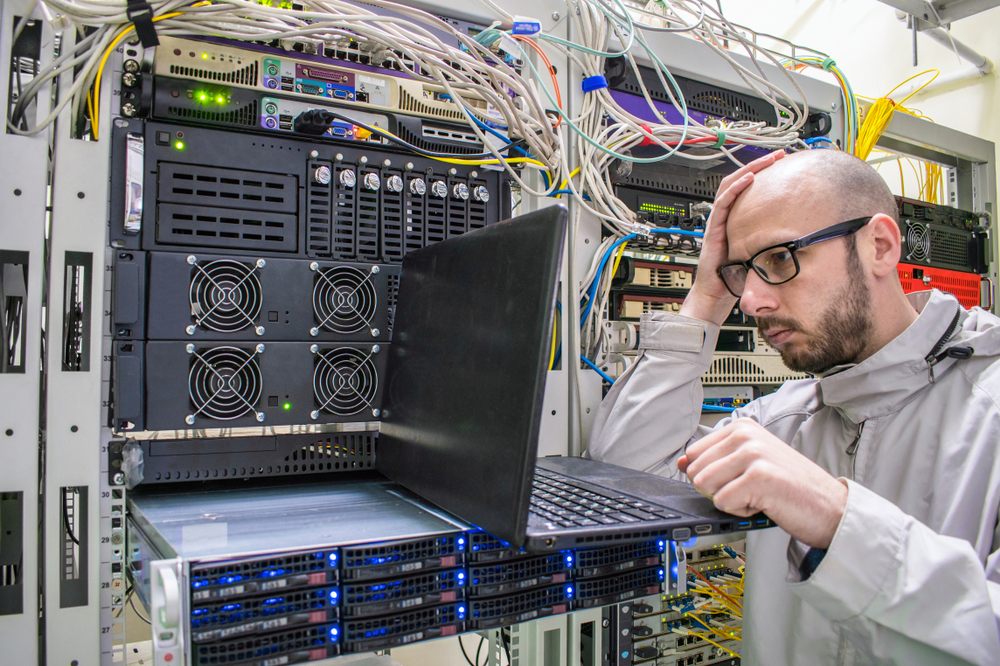In today’s highly digitalized world, servers play a crucial role in the smooth functioning of organizations, businesses, and even personal lives. They serve as a central hub for data storage, processing, and communication, allowing multiple users to access and share information simultaneously. However, despite their importance, servers can be susceptible to various technical issues, which can lead to potential server failure.
Server failure can result in significant disruptions and downtime, causing severe consequences for businesses and organizations. These consequences may include loss of productivity, revenue, and even reputation. Therefore, it is essential to recognize the signs of a potential server failure to take proactive measures and prevent such consequences. This article will explore some common signs of a potential server failure that users should be aware of to ensure their server’s optimal performance and avoid server downtime.
Temperature Problems & Overheating
To protect your hardware, your data center must remain at a particular temperature.
According to the ASHRAE Data Center Standards, you must keep a server between 89.6 degrees and 59 degrees Fahrenheit for optimal functioning.
Servers generate an extensive amount of heat when operating at total capacity, and hardware reliability allegedly decreases significantly with every climb in temperature. A high temperature can thus hamper your operations and cost you money over time.
To that end, keeping your servers at an average temperature of 70 degrees Fahrenheit is essential to ensure wiggle room. To do so, you’ll need to keep your data center at a temperature that accounts for the overheating common to servers.
Conversely, a high temperature may indicate an underlying problem, which may have nothing to do with your data center’s climate. High temperatures can signal issues with your power supply or memory. To determine the cause of the temperature rise, you can check the CPU, chipset, and HDD temperatures. Alternatively, check your front intake, exhaust, and airflow for clogs or other issues.
Frequent Failures and Reboots

Most servers function at total capacity unless there is an underlying problem. Although your servers might crash while you’re running an intensive process, they are unlikely to fail for no reason at all suddenly. If your servers fail frequently or reboot regularly for no apparent reason, you may have an underlying problem. You can take several measures to begin searching for the source of the problem, such as:
- Look over the server’s event logs for previous issues or possible explanations.
- Run a memory test and reseat the memory sticks.
- Conduct a physical check of the hardware, including your motherboard. Search for any apparent damage.
- Assess the server’s disk for errors
- Check for high CPU or memory utilization.
- Run an antivirus or anti-malware program to search for possible infections or evidence of hacking.
Slowing Performance
If you work in a dentist’s office, you are likely familiar with the lightning pace of the work environment. A sudden slow spell is unusual—and cause for concern. If your computers are running slow, this may indicate an underlying problem with your servers. Consider checking with your internet provider first and assessing any possible disruptions to your power.
Then, it’s time to check your server. A slow connection may indicate a memory leak eating up your server’s resources and considerably slowing operations. You can resolve this issue by updating your software or adjusting your settings.
However, if the problem persists, you might want to check it’s hard drive. The hard drive can crash for various reasons. Alternatively, applications might fail as a result of data corruption.
Regardless of the nature of the issue, you’ll need to identify it immediately since small problems in hardware tend to accumulate over time.
At this point, you may wish to consider replacing your server with a newer model. Slow performance and data transfers are often a simple sign of your server’s age, and you can amend this issue by using a more recent (and inevitably faster) version.
How to Avoid Server Failure

You can take several measures to avoid server failure. First, check for the above signs. Is your performance slowing? Are temperatures overheating? You can also listen for strange sounds since this can be a sign of server failure. Although you can try to prevent server failure, old servers will inevitably slow, crash, and frequently reboot, eventually leading to loss.
It’s important for businesses and organizations to be aware of the signs of potential server failure in order to take proactive measures to prevent downtime and data loss. Signs such as slow response times, frequent error messages, unusual noises or overheating, and increased power usage can indicate that a server is experiencing issues.
By regularly monitoring servers and addressing any warning signs promptly, businesses can minimize the risk of server failure and ensure the continuity of their operations. It is also recommended to have a contingency plan in place, such as data backups and redundancy measures, to mitigate the impact of any potential server failure.If you suspect it’s time to replace your server, it is likely time to replace it! If you suspect you need a new server for your dentist’s office, contact us today, and we’ll help you identify the best solution for your needs.


